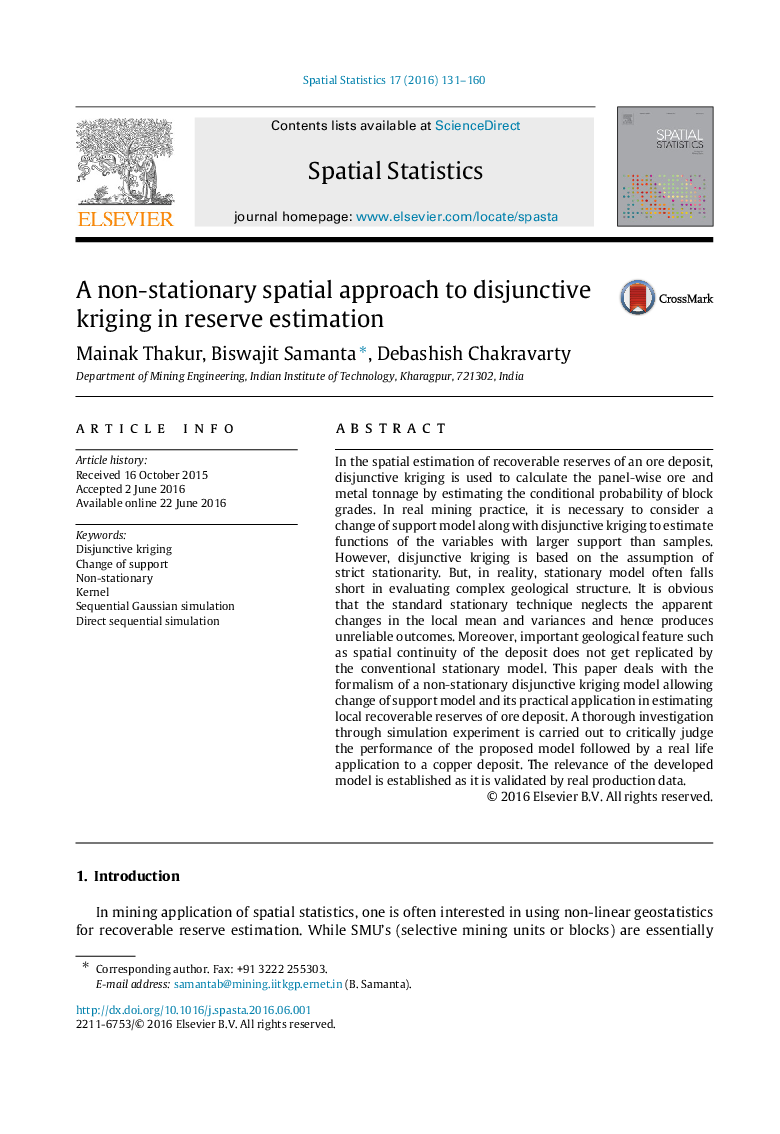| Article ID | Journal | Published Year | Pages | File Type |
|---|---|---|---|---|
| 7496565 | Spatial Statistics | 2016 | 30 Pages |
Abstract
In the spatial estimation of recoverable reserves of an ore deposit, disjunctive kriging is used to calculate the panel-wise ore and metal tonnage by estimating the conditional probability of block grades. In real mining practice, it is necessary to consider a change of support model along with disjunctive kriging to estimate functions of the variables with larger support than samples. However, disjunctive kriging is based on the assumption of strict stationarity. But, in reality, stationary model often falls short in evaluating complex geological structure. It is obvious that the standard stationary technique neglects the apparent changes in the local mean and variances and hence produces unreliable outcomes. Moreover, important geological feature such as spatial continuity of the deposit does not get replicated by the conventional stationary model. This paper deals with the formalism of a non-stationary disjunctive kriging model allowing change of support model and its practical application in estimating local recoverable reserves of ore deposit. A thorough investigation through simulation experiment is carried out to critically judge the performance of the proposed model followed by a real life application to a copper deposit. The relevance of the developed model is established as it is validated by real production data.
Related Topics
Physical Sciences and Engineering
Earth and Planetary Sciences
Earth and Planetary Sciences (General)
Authors
Mainak Thakur, Biswajit Samanta, Debashish Chakravarty,
